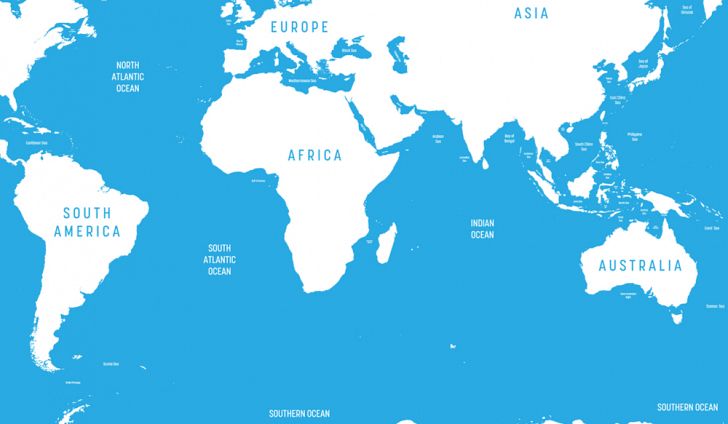The geography of the world can easily be understood in three broad ways. It can be broadly understood by making sense of its geographical boundaries e.g., plateaus, coasts, and mountains. The 2nd way to understand geography is by making sense of its political boundaries, i.e. economic zones, territorial seas, continental shelves, and islands. The 3rd way to perceive the map of the world is to the imagination of boundaries that surpass both preceding diversities. Indo pacific region, the erstwhile Asia pacific region encompasses the Indian Ocean and the west and the Central Pacific Ocean. The US intends to dominate these regions.
The term Indo-pacific was used by Gurpreet Khurana, an Indian maritime strategist and executive director of the Delhi maritime foundation. Recently in his article published in the Washington Post wrote that the term indo pacific has changed the mind map since the Chinese reform 1980s.
He further claims that the Indo-Pacific” term used by the United States means that “India, the United States, and other major Asian democracies, especially Japan and Australia, will join in curbing China in the new framework of growing “Cold War” influence.”
Read more: The emerging cold war in the indo pacific region
The actual strategy
Indo pacific strategy underpins the idea of President Biden to more resolutely anchor the US in the Indo pacific region and to brace the region more decisively. The foremost strategy is sustained and enhanced association with cronies, partners, and institutions within the region and yonder.
The US vision and strategy of the Indo-pacific region are closely related to the Indian look east policy, North Korean Southern policy, the Australian Indo-pacific concept, Japan’s free and open Indo-Pacific region, and Taiwan’s new southbound policy.
With Japan, the USA is collaborating on energy and infrastructure-related projects with a total cost of 29$ million dollars under the US-japan strategic partnership, and the US-japan strategic digital partnership from Indo-pacific to the east coast of Africa which will further enhance the japan and US ties along the Indo-pacific region. The USA is also committed to investing 10 billion dollars in the public and private investment in capacity building.
The US is also working to rally its ties with the Korean republic and is expanding its collaboration with Korea in the Indo-Pacific region. A memorandum of understanding was signed between the Korean international cooperation agency and American aid. A joint statement released in November has stated that Korea will build a partnership on governance with the USA and on increasing water security cooperation in the Mekong region. They are also aiming to build partnerships over infrastructure development. They are also strengthening their relationships with Taiwan. The US secretary states that we have always shown concern over Beijing for bullying Taiwan through military strategies and economic pressure.
Read more: NZ’s Ardern to discuss US engagement in Indo-Pacific with Biden
A strong, rules-based architecture anchors the U.S. vision for the Indo-Pacific region. Representing ten countries, 650 million people, and a combined GDP of trillions of dollars. ASEAN is central to this architecture and is most effective when it speaks with one voice about pressing political and security issues, and it took an important step in this regard with the June 2019 release of its “Outlook on the Indo-Pacific.” We had witnessed a clear convergence between the principles enshrined in ASEAN’s Indo-Pacific Outlook— inclusivity, openness, good governance, and respect for international law—and the vision of the United States for a free and open Indo-Pacific, as well as the regional approaches of our allies, partners, and friends.
The future seems promising
The United States supports ASEAN’s efforts to ensure that all Indo-Pacific countries, regardless of their size, have an equal stake in determining the future of the region. Moreover, the U.S is also expanding its technical assistance strengthening capacity in the energy sector; promoting shared approaches to cyber security and digital trade; creating opportunities for small and medium-sized enterprises; and encouraging women and youth innovators and entrepreneurs.
The Indo-pacific strategy entails two main propositions, the first proposition advocates the making of the military, political and value alliances from India to the Pacific Ocean, and the other proposition demands the formation of economic cooperation among US allies to extend the economic cooperation to northeast Asia to prosper the economy.
Read more: The race of supremacy in the Indo-Pacific region
Besides, the US Indo pacific strategy has exaggerated the duplication of political, security and economy in the Asia-pacific region. Contrary to the Asia pacific which is normally used as a geo-economic term Indo pacific is the mainly geo-strategic concept used by the US. As a part of the Dualistic structure, the countries in the Asia Pacific region depended on America politically while on China, economically.
I am Saqib Khan, an International Relations graduate from National Defence University (NDU) Islamabad and a freelance writer. Currently, I am volunteering as Member Youth Parliament for PILDAT.













